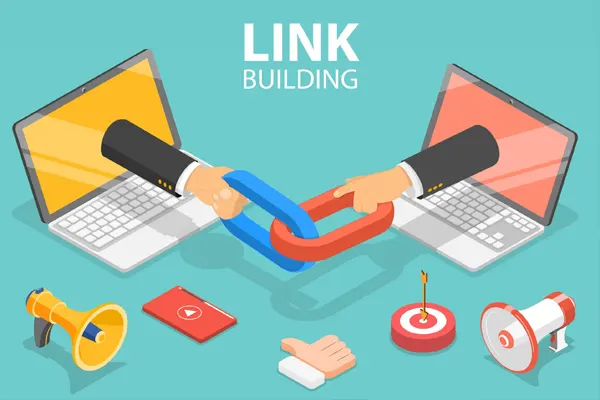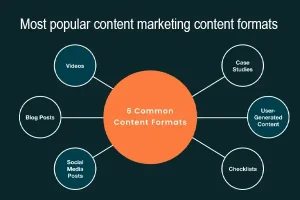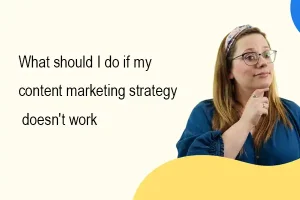What should I do if my content marketing strategy doesn't work?
A content marketing strategy that isn’t delivering—whether it’s low traffic, poor engagement, or no conversions—can feel like a dead end. But failure often stems from fixable issues like misaligned goals, outdated tactics, or weak audience targeting. In 2025, with digital competition fiercer than ever, identifying and addressing these gaps is critical to turning your strategy around. A 2024 CMI study found that 60% of struggling campaigns lacked clear objectives or audience focus. This guide offers specific steps to diagnose problems and revitalize your content marketing for better results.
Step 1: Diagnose the Root Cause
Before making changes, pinpoint why your strategy is underperforming. Start by reviewing key metrics with tools like Google Analytics or SEMrush. Low traffic might indicate poor SEO or distribution, while high bounce rates suggest content isn’t resonating. Common issues include:
Content not addressing audience needs or search intent.
Weak SEO optimization, like missing keywords or outdated links.
Ineffective distribution channels, limiting reach.
Unclear or uncompelling calls-to-action (CTAs) failing to convert.
Check your metrics—traffic sources, time on page, conversion rates—and compare them to industry benchmarks (e.g., average blog bounce rate of 40-60%). This helps you focus on the most pressing problems.
Step 2: Realign with Your Audience
If your content isn’t engaging, it may not connect with your target audience. Revisit your buyer personas to ensure they reflect current demographics, pain points, and behaviors. For example, a B2B audience might need in-depth whitepapers, while Gen Z prefers quick TikTok videos. Use Google Analytics to see who’s visiting your site and tools like SurveyMonkey to gather feedback on audience needs, such as queries like “how to improve content marketing.”
Update content to address specific pain points. For instance, if your audience searches for “content marketing for small businesses,” create a blog or video tackling that topic. A 2024 HubSpot study showed that audience-aligned content boosts engagement by 50%. Ensure your tone and format—whether blogs, Reels, or infographics—match your audience’s preferences.
Step 3: Strengthen SEO and Content Quality
Poor SEO can bury your content in search results. Use tools like Ahrefs or SurferSEO to analyze top-ranking competitors and identify gaps. Ensure primary keywords, like “fix content marketing strategy,” appear in titles, H1s, and throughout the content at a 1-2% density. Add semantic keywords, such as “improve content performance,” to align with Google’s natural language processing. Update outdated links with credible sources, like a 2025 Moz article on SEO trends, to boost authority.
Beyond SEO, enhance content depth. Shallow content fails to compete with comprehensive resources. For example, a blog on content marketing could include case studies, recent data (e.g., “2025 CMI report: 70% of brands prioritize video”), or actionable tips. Aim for readability with short sentences and a Flesch Reading Ease score above 60. Adding visuals, like infographics or charts, can increase engagement by 40%, per 2024 CMI data.
Step 4: Optimize Distribution Channels
Even great content flops without proper reach. Audit where you’re sharing content and whether it aligns with your audience. For instance, LinkedIn works for B2B, while Instagram or TikTok suits younger demographics. If your content isn’t gaining traction, experiment with new platforms like Bluesky or leverage X for real-time engagement. Use tools like Buffer to schedule posts for optimal times, increasing visibility.
Amplify reach through email newsletters or partnerships. Guest posting on industry blogs or collaborating with influencers can expose your content to new audiences. A 2024 HubSpot study found that multi-channel distribution increases reach by 35%. Repurpose content—turn a blog into a 30-second Reel or a LinkedIn carousel—to maximize impact across platforms.
Step 5: Revamp Calls-to-Action
If conversions are low, your CTAs may be weak or unclear. Craft specific, compelling CTAs like “Download our free content audit template” or “Get your custom strategy today.” Place them strategically—at the end of blogs, in email footers, or within social posts. Test variations, such as “Start Now” vs. “Learn More,” using Google Analytics to track click-through rates. A clear CTA can boost conversions by 10%, per 2024 Yotpo data.
Step 6: Test, Track, and Iterate
After making adjustments, test and monitor results. Use A/B testing for headlines, formats, or CTAs to identify what works. For example, test a video vs. a blog post to see which drives more engagement. Track metrics like traffic, time on page, and conversions with Google Analytics, and monitor SEO rankings with Google Search Console. Check social shares via BuzzSumo to gauge audience response.
Set realistic goals, like increasing organic traffic by 15% in three months. Review data weekly to spot trends and monthly for deeper insights. If a refreshed blog post gains traction, double down on similar updates. If a new channel underperforms, pivot to another. Iteration based on data ensures continuous improvement.
Practical Tips for Recovery
Focus on high-impact content first, like top-traffic pages that need updates. Stay agile by experimenting with emerging formats, like AR filters for product demos. Engage with your audience through comments or polls to refine content. Use free or affordable tools like Canva for visuals or Google Analytics for tracking to keep costs low.
Conclusion
A failing content marketing strategy isn’t the end—it’s an opportunity to refine and improve. By diagnosing issues, realigning with your audience, strengthening SEO, optimizing distribution, and revamping CTAs, you can turn things around. Start auditing your content today to rebuild a strategy that drives traffic, engagement, and conversions in 2025.
Download our free content recovery guide or contact us for a tailored plan to fix your strategy!
Our Services
Related News
Frequently Asked Questions (FAQ)
Why is my content not ranking on Google?
It may lack relevant keywords, depth, or fresh links. Use SEMrush to optimize for keywords like “content marketing strategy 2025.”
How long does it take to fix a failing strategy?
SEO improvements take 3-6 months, but engagement can rise in weeks with targeted updates.
Can small businesses recover a failing strategy?
Yes. Free tools like Google Analytics and strategic tweaks make recovery accessible for any budget.









